Nepo still in the lead
The rapid section of the Grand Chess Tour event in Zagreb came to an end on Friday. Ian Nepomniachtchi is leading the standings table with 11/18 points (+2). The Russian drew all three of his games on the third day of competition. Four players go into the 18-round blitz section a full point behind him — Anish Giri, Maxime Vachier-Lagrave, Jan-Krzysztof Duda and Ivan Saric (note that wins are worth 2 points in the rapid and 1 point in the blitz).
 Garry Kasparov's rise to the top was meteoric and at his very first attempt he managed to become World Champion, the youngest of all time. In over six hours of video, he gives a first hand account of crucial events from recent chess history, you can improve your chess understanding and enjoy explanations and comments from a unique and outstanding personality on and off the chess board.
Garry Kasparov's rise to the top was meteoric and at his very first attempt he managed to become World Champion, the youngest of all time. In over six hours of video, he gives a first hand account of crucial events from recent chess history, you can improve your chess understanding and enjoy explanations and comments from a unique and outstanding personality on and off the chess board.Saric will not participate in the blitz section, as he will be replaced by Garry Kasparov. Much like in the Paris leg, the organizers invited a special wildcard, with the proviso that he will only play the second half of the event — in Paris, Vladimir Kramnik ‘replaced’ Etienne Bacrot. According to the regulations, the points collected by Saric and Kasparov will be added in the final standings table, so it is possible for the ever-competitive former world champion to get a ‘shared’ tournament victory.
Both Saric and Bacrot were the lowest-rated players in Paris and Zagreb, and both had strong performances, each scoring 10/18 points in the rapid. Kramnik did not have it easy in France, as he merely collected 5/18 points in the blitz — the lack of competitive practice, naturally, had much to do with the subpar performance. Kasparov will surely try to improve on his compatriot’s showing.

Ivan Saric had a good performance in Zagreb | Photo: Lennart Ootes
Three decisive games
The first two rounds on Friday saw all games ending in draws, mostly in encounters that were balanced from start to finish. In the third round of the day, however, three decisive results had a considerable impact on the standings table.
First, Duda beat Korobov after the latter failed to find a forcing continuation that would have given him a remarkable win with the black pieces.
Despite being a piece down and having a miserable bishop trapped on h8, Black can get a winning advantage by making the most of his passed pawn and the initiative on the queenside. After thinking for a bit over a minute, Korobov faltered with 27...Rb8+. The winning continuation (and a forcing one at that) started with 27...Qb4+, and Black wins after 28.Ka1 Rxd1+ 29.Rxd1 Rb8
 The interactive format encourages the viewer to study and find the brilliancy, following the footsteps of some of the greatest players of the game.
The interactive format encourages the viewer to study and find the brilliancy, following the footsteps of some of the greatest players of the game.
White is in deep trouble. After 30.Qd2, the dark-squared bishop comes alive with 30...Bxf6 and Black’s pieces are perfectly coordinated.
None of this happened, though, as Korobov’s missed chance was followed by another mistake, and Duda went on to get the full point in a wild tactical struggle.
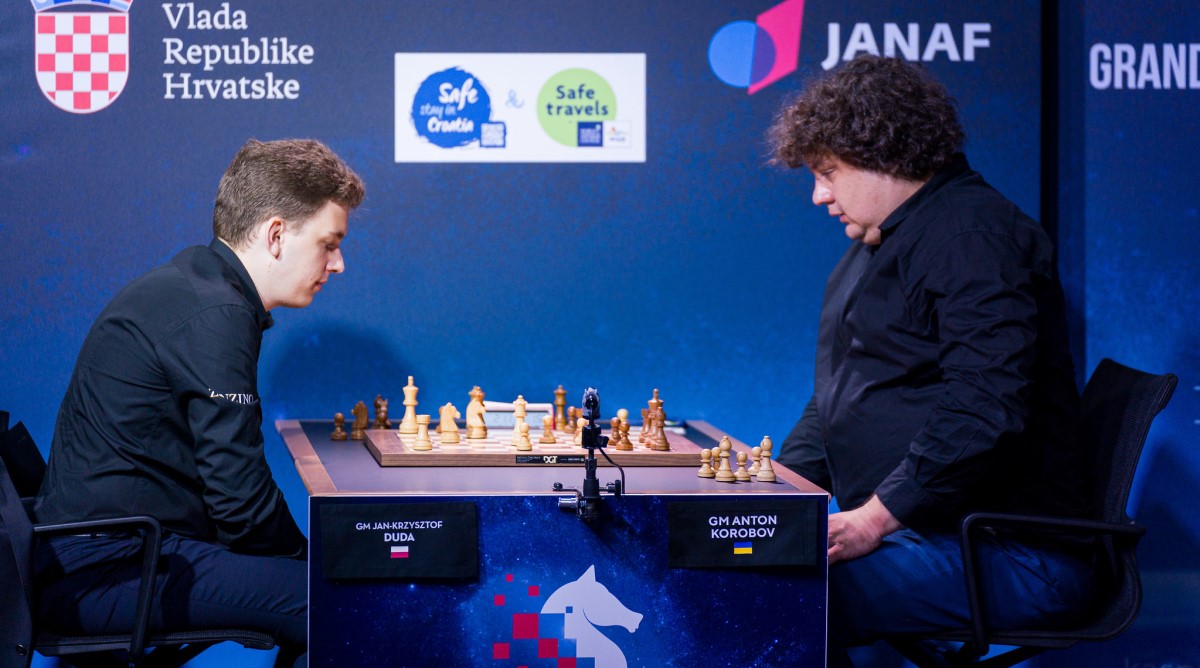
Jan-Krzysztof Duda vs. Anton Korobov | Photo: Lennart Ootes
Much like Duda, Giri joined the chasing pack in the last round of the rapid section. The Dutchman inflicted Vishy Anand’s second loss of the event.
Black is a pawn down, but he also has the bishop pair. In addition, White’s d5-knight is pinned at the moment. After reflecting for 3 minutes, Anand erred with 28...Bxa3, which does get the pawn back, but also allows White to simplify into a better position with 29.Nf6+ Kg7 30.Qxa3 Qxa3 31.bxa3 Kxf6 32.d5
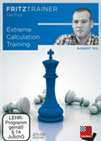 Special attention will be paid to Intermediate Moves, Quiet Moves, Sacrifices on Empty Squares, Mating Patterns, Ignoring Opponents Threat, Calculation in Defence and Method of Comparison. Plus 50 interactive examples to test your knowledge.
Special attention will be paid to Intermediate Moves, Quiet Moves, Sacrifices on Empty Squares, Mating Patterns, Ignoring Opponents Threat, Calculation in Defence and Method of Comparison. Plus 50 interactive examples to test your knowledge.
Anand faltered again with 32...Kg7 (32...Rc2 or 32...h5 were better tries), and Giri went on to show good technique until getting a 51-move win.
In the first diagrammed position, Anand had the strong 28...Rd8.
Black makes the most of the pin. For example, after 29.Qb3 Black gains (at least) an exchange with 29...Bxd5 30.Qxd5 Bb4.
It was a painful miss for the Indian legend.
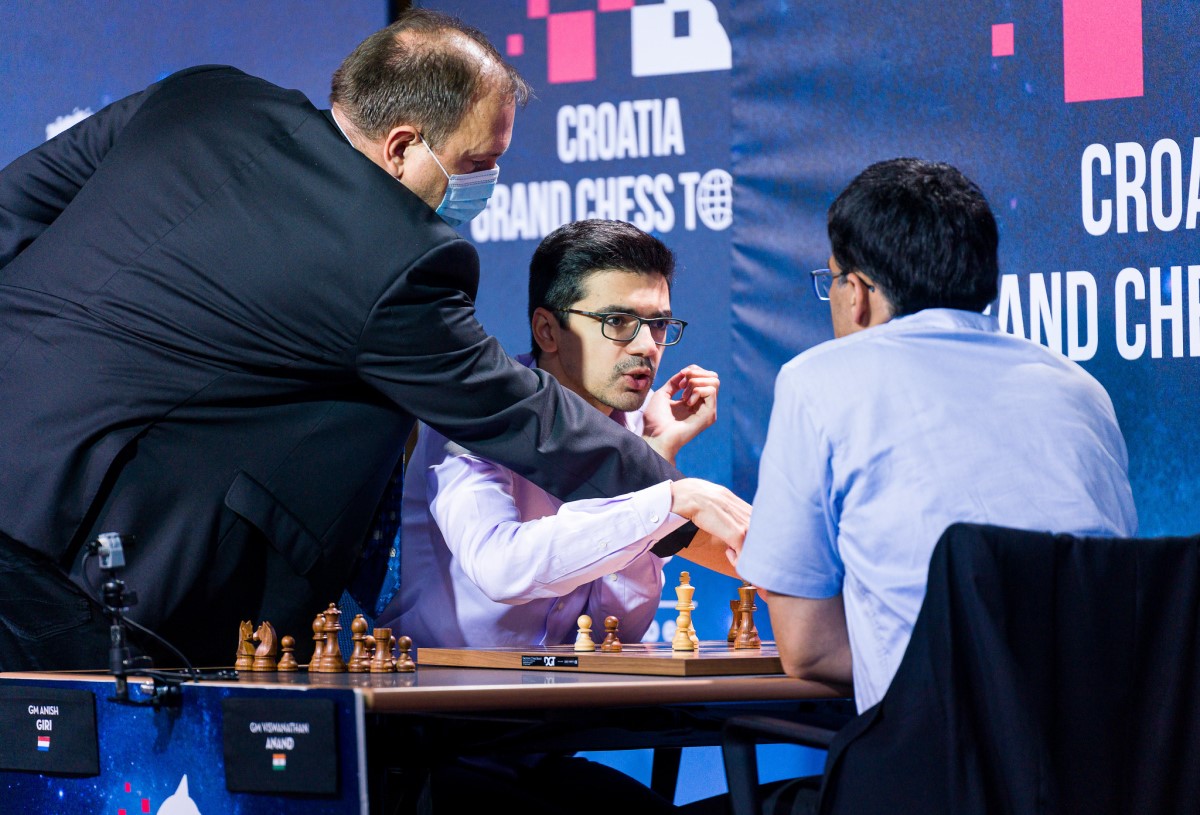
Anish Giri discussing the game with Vishy Anand | Photo: Lennart Ootes
Finally, Shakhriyar Mamedyarov defeated Jorden van Foreest to end the rapid section with a fifty percent score. The game concluded with a peculiar material imbalance on the board.
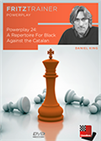 On this DVD Grandmaster Daniel King offers you a repertoire for Black against the Catalan, based around maintaining the rock of a pawn on d5. Keeping central control ultimately gives Black good chances to launch an attack against the enemy king.
On this DVD Grandmaster Daniel King offers you a repertoire for Black against the Catalan, based around maintaining the rock of a pawn on d5. Keeping central control ultimately gives Black good chances to launch an attack against the enemy king.
Things had gone south for White ten moves earlier. It is always tough to deal with such double-edged positions while facing a player of Mamedyarov’s tactical strength.
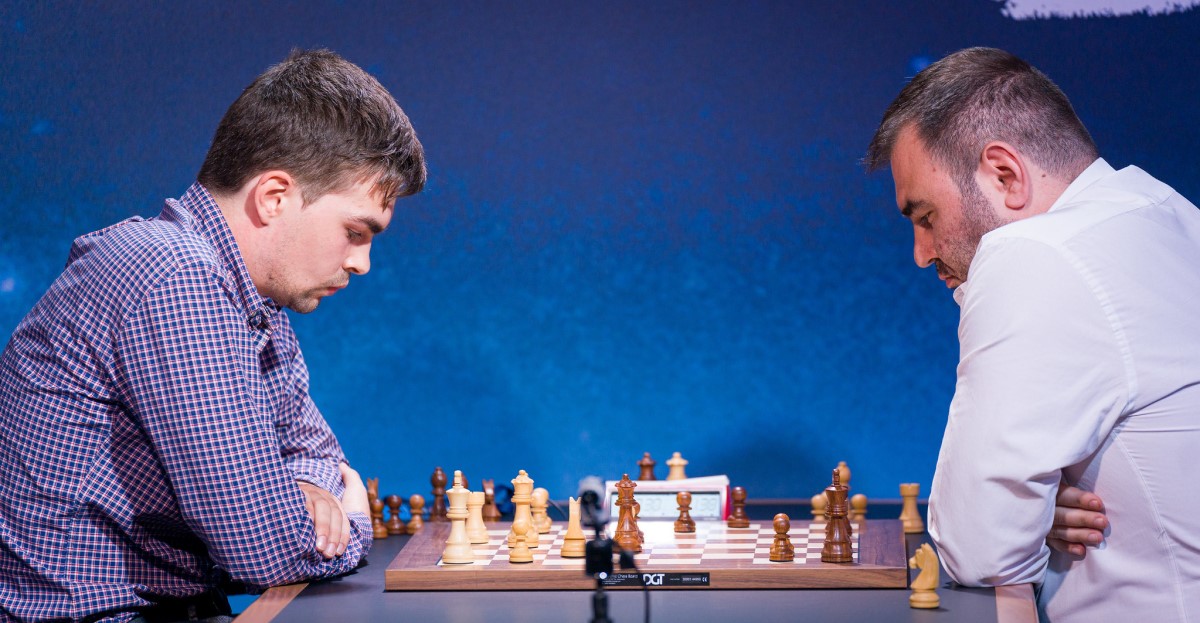
Shakhriyar Mamedyarov beat this year’s Tata Steel Masters winner Jorden van Foreest | Photo: Lennart Ootes
Final standings - Rapid
Win = 2 points; Draw = 1 point
All games
Links



























